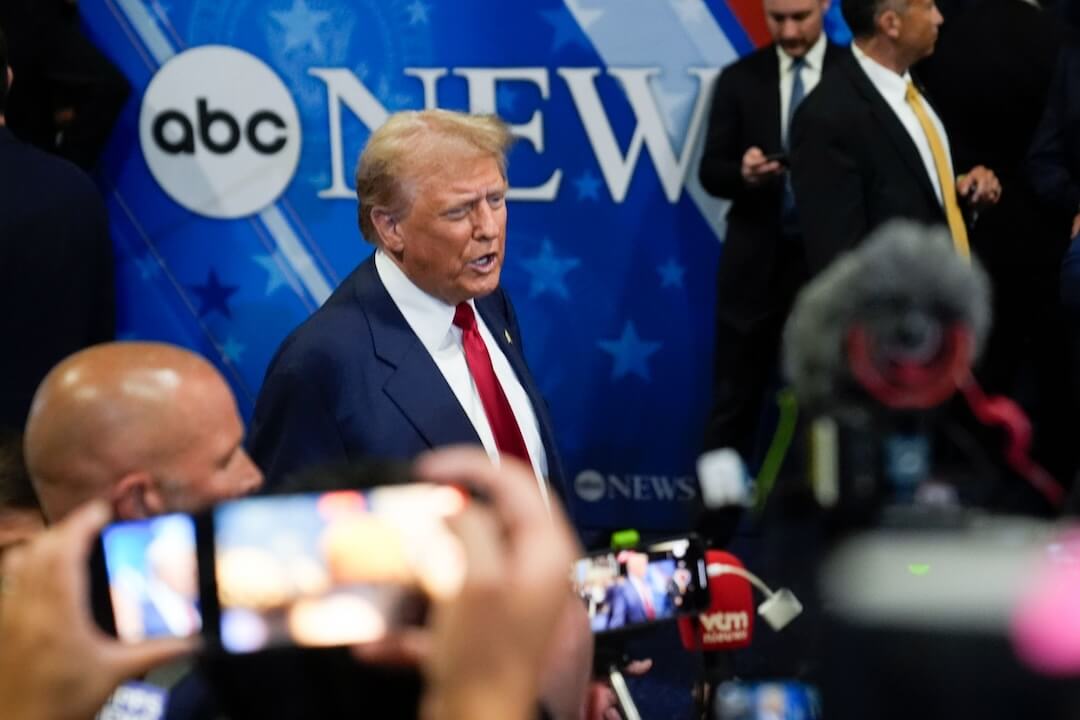 Covering COVID-19 is a daily Poynter briefing of story ideas about the coronavirus and other timely topics for journalists, written by senior faculty Al Tompkins. Sign up here to have it delivered to your inbox every weekday morning.
Covering COVID-19 is a daily Poynter briefing of story ideas about the coronavirus and other timely topics for journalists, written by senior faculty Al Tompkins. Sign up here to have it delivered to your inbox every weekday morning.
The White House’s new COVID-19 data director has finally done what should have been done months ago and released the weekly state-by-state COVID-19 updates that the White House COVID-19 task force sends to governors. A number of less-than-forthcoming public servants had refused to pass them along to you.
These updates are important partly because, in the past, the task force has made some pretty strong recommendations to states that governors ignored. But you would not know they were ignoring the recommendations because you didn’t see them.
The first new release of the data does not include the “hidden recommendations” that the Trump administration included, so journalists are asking for those to get put back into the reports.
You will see reports on hospital admissions, hospital supply levels, testing and death trends and county-by-county data. I am glad to see this release. There was absolutely no reason that journalists should have had to battle to pry it loose all this time.
One day after a CDC report on COVID-19 in schools, some school outbreaks
Yesterday I told you about a new Centers for Disease Control and Prevention report that said there is scant evidence that opening schools significantly adds to the coronavirus’ spread — if the schools take proper precautions.
But just as people were opening yesterday’s newsletter, newsrooms were reporting bulletins about COVID-19 outbreaks in some schools.
- In New Jersey, there are 10 new COVID-19 outbreaks associated with in-school transmission just this week. In one Essex County school, there were 92 cases.
- In Michigan, there are 29 new outbreaks in schools involving close to 100 students and staff.
- In Philadelphia, WHYY reports there have been at least nine outbreaks in area schools since fall 2020.
- In Wichita, Kansas, health officials just named a local high school a COVID-19 “cluster.”
One way to look at the data is that in a pandemic, you have to expect that there will be cases anywhere there are people, schools included. The CDC study points out that in schools, the infection rates were generally below the general population, so opening schools is not associated with a greater risk of spreading the virus.
And still, every time your kid’s school calls with another COVID-19 alert, reasonable people raise doubts about the CDC’s finding.
Demand for office space falls … again

Businesses continue to shutter operations in New York City during the coronavirus Pandemic. (Photo: STRF/STAR MAX/IPx)
Only two major cities — Los Angeles and San Francisco — appear to have escaped a national downturn in demand for office space. This is a trend that is shaping and will continue to shape cities nationally, maybe globally, for years.
The VTS Office Demand Index, or VODI, is one way to monitor future demand for office space. VODI recorded a stunning 26% drop in the fourth quarter of 2020. Seattle and Washington, D.C., which until recently have seen strong demand for new office space, are among those that are losing steam. More common is the news that Chicago got from United Airlines, that the airline is cutting its office space in Willis Tower. New York City’s vacancy rate has been growing since 2020.
The Dallas Morning News finds:
North Texas in 2020 saw a huge decline in demand for office space, with more than 60% of workers at home because of COVID-19. Net office leasing fell by almost 5 million square feet — the greatest such decline in decades.
“We continue to see challenges in the office market with tenant occupancy declining in response to COVID risks, which has fostered an appetite to implement our post-pandemic office reset guidelines to adapt the office space by addressing new design solutions, infrastructure engineering and technology,” Scott Eldredge, CBRE Managing Director with Project Management said in a statement.
In Minneapolis, office vacancies rose sharply in the fourth quarter. KSTP TV reports how vacant offices translate into sparse traffic for transit and other businesses:
The Minneapolis Downtown Council tracks ‘reanimation’ metrics to evaluate how the downtown area is being impacted by COVID-19. The latest report for January shows 11.7% hotel occupancy, 37% light rail ridership, 18.7% seated diners in restaurants compared to one year ago and 15.6% office occupancy.
“I think ‘ripple effect’ is exactly the right word to use because the 218,000 people that came to work every day before COVID really was a customer base for restaurants and retailers,” said Steve Cramer, president and CEO of Minneapolis Downtown Council. “That whole economic system has been disrupted over the last year.”
It is not just big cities feeling the change in office space occupancy. In medium-sized towns like Wilmington, Delaware, important employers are shedding office space or only agreeing to very short-term leases to see how their needs evolve in the next year or two.
New data on the sharp decline in jail and prison populations during a pandemic
I have told you several times that I am leading a multi-year series of seminars and workshops centered on reforming jails, prisons, policing and local justice systems. One of our partners in this effort is the Vera Institute of Justice, which just came out with new data some of you have been asking for. This new data tracks the stunning drop in jail and prison populations nationwide that unfolded largely due to the pandemic.
Vera says this slug of data does not tell us everything we want to know about the pandemic releases, but it appears that practically all groups except Black men were released fairly equitably.
Rural jails emptied jails faster than big-city jails:
In 2020, the largest and most sustained jail population declines were in rural areas, where the jail population dropped 33 percent between midyear 2019 and midyear 2020, and subsequently grew 9 percent between summer 2020 and fall 2020. Even with these dramatic declines, rural counties still incarcerate people at double the rate of urban and suburban areas. Three out of five people incarcerated in local jails are in smaller cities and rural communities.
Here is something for you to pay attention to. Did you see that line in the paragraph above? There was a 33% decline in the first part of last year and then, from summer through fall, jail populations went back up another 9%. You should ask why.
As the pandemic grew worse, it grew even worse in prisons and jails, so how do your local officials justify this increase in jail populations? Does it make any sense to keep people accused of nonviolent crimes in jail, awaiting trial, during a pandemic?
Prisons are releasing people without COVID-19 tests or a quarantine
I just cannot say enough good things about the journalism that The Marshall Project produces around criminal justice and especially about jails and prisons. They just published a piece about how jails and prisons are releasing people without testing them for COVID-19, despite the fact that one in five people in jails and prisons in the U.S. has or has had the virus.
At least 343,000 people in state and federal facilities around the country have tested positive as of early January, according to reporting by The Marshall Project and The Associated Press. It is a fairly safe bet that prisons and jails are routinely sending infected people out into the public.
Read this passage and you will find a story idea to follow wherever you are:
Even as prisons have proved hotspots of COVID-19, the pandemic has posed new challenges for the people who leave them — and the communities they re-enter. Even as some states have accelerated the release of prisoners to stem contagion, relatively few systematically test or quarantine people before they leave. In turn, reentry facilities and probation and parole systems across the country are scrambling, often with few resources or safety protocols, to prevent further spread of the coronavirus.
The Marshall Project and the Associated Press surveyed all 50 state departments of corrections and the federal Bureau of Prisons (BOP) about their prerelease protocols.
Out of the 31 prison systems that responded, 17 states plus the BOP said they’re testing all prisoners before they get out. Twelve states and the BOP said they routinely quarantine people prior to release, and 12 states said they delay the release of parolees who test positive. Just 13 states plus the BOP said they were coordinating discharges with local Departments of Health. And only three states — California, Idaho and North Carolina — said they are providing hotel rooms where people who are positive on release can safely quarantine in the community.
There may be reasons that lockups don’t do these exit tests beyond costs and manpower. It also might be really bad public relations for jails and prisons that already have a hard time recruiting employees. One doctor told me yesterday that if a jail knew it had discharged a COVID-positive person to the street, there could be some level of culpability that it would not have if it didn’t know because it had not tested.
Where is the evidence that curfews control COVID-19?

The Fred 62 restaurant is open for takeout and delivery in the Los Feliz neighborhood of Los Angeles Monday, Jan. 25, 2021. (AP Photo/Damian Dovarganes)
I have asked this question a few times and it is back. The New York Times explores the question of whether government-enforced curfews do anything to control the spread of the coronavirus.
Some U.S. cities and states are forcing or have forced bars and restaurants to close at a certain time. The one I don’t get the most is closing gyms after a certain hour. France just reimposed nighttime curfews. Other European countries have used curfews as well, under the notion that they keep people at home or at least send them home around the time when alcohol starts flowing and people become more reckless. Some of those curfews have sparked violent demonstrations.
Let’s get this fact on the table: There is no convincing evidence to guide our decision on curfews, only the intuition that telling people to go home is a better health policy. Anecdotal studies show that last fall, adults who tested positive for COVID-19 were twice as likely to have been to a restaurant or bar in the two weeks prior. But that does not give us the evidence we need to make a judgment about curfews — only maybe about the wisdom of going to restaurants and bars. Then again, we do not know from those studies if bars are where they got the virus. Maybe you would find those same people were more likely to do other sociable things.
There are other ways of thinking about this, the Times says:
“You can think of it like this,” said William Hanage, an epidemiologist at the Harvard T.H. Chan School of Public Health, “what proportion of transmission events happen during the time in question? And how will the curfew stop them?”
One study, published recently in Science, analyzed data from Hunan Province, in China, at the start of the outbreak. Curfews and lockdown measures, the researchers concluded, had a paradoxical effect: These restrictions reduced the spread within the community, but raised the risk of infection within households, reported Kaiyuan Sun, a postdoctoral fellow at the National Institutes of Health, and his colleagues.
Dr. Longini and his colleagues incorporated lockdowns and curfews into models of the pandemic in the United States and concluded that they can be an effective way to reduce transmission.
But, he cautioned, models come with a lot of assumptions about the population and how the virus spreads. “Whether you believe that is a scientific rationale depends on whether you believe the model,” he said.
But there is also a downside: Curfews cause economic harm to the businesses that lose sales.
The pandemic has fueled credit card fraud
Julie Conroy, a research director for Aite Group’s fraud and anti-money laundering practice, says Americans experienced $11 billion in credit card fraud in 2020. You can partly blame the pandemic for that stunning number. We use credit cards more in a pandemic, so there is more opportunity for fraudsters to do their thing.
The wild and crazy GameStop stock battle

A woman wears a mask as she walks past a GameStop store in Des Plaines, Ill., Thursday, Oct. 15, 2020. (AP Photo/Nam Y. Huh)
You may have heard about this jaw-dropping battle going on between investors on Reddit and Wall Street hedge fund managers that has resulted in stock for the sleepy GameStop company to run up a 1,700% gain this month. GameStop is the mall video game retailer where you can buy, sell and trade PlayStation games and such.
The Wall Street big boys were convinced that GameStop stock prices would drop, so they “shorted” GameStop’s stock to bet on that. But the Reddit crowd, hating Wall Streeters as they do, decided to come together to run up the stock price — meaning the hedge fund guys could lose a lot, and I mean a LOT, of money. BuzzFeed does a really good job of explaining all of this.
The Reddit gang is now pulling the same kind of deal on AMC Theatres’ stock.
Michael Burry, the fund manager of ‘Big Short’ fame whose mid-2019 revelation of a long position in the stock helped trigger the frenzy, has now called it “unnatural, insane, and dangerous.” Still, the persistent short squeeze has made millionaires out of armchair traders on the WallStreetBets forum, prompting some to wonder how capital gains tax works.
When this all comes crashing down, it is going to hurt. The feds say they are watching.
COVID-19 and Alzheimer’s deaths — show some love to The Detroit Free Press
Yesterday I mentioned some good reporting about how the pandemic may be accelerating deaths among Alzheimer’s patients. I pointed you to USA Today’s republication of the Detroit Free Press’ work but didn’t say it came originally from the Freep. Georgea Kovanis deserves some love for pointing us to this important story.
We’ll be back tomorrow with a new edition of Covering COVID-19. Sign up here to get it delivered right to your inbox.








